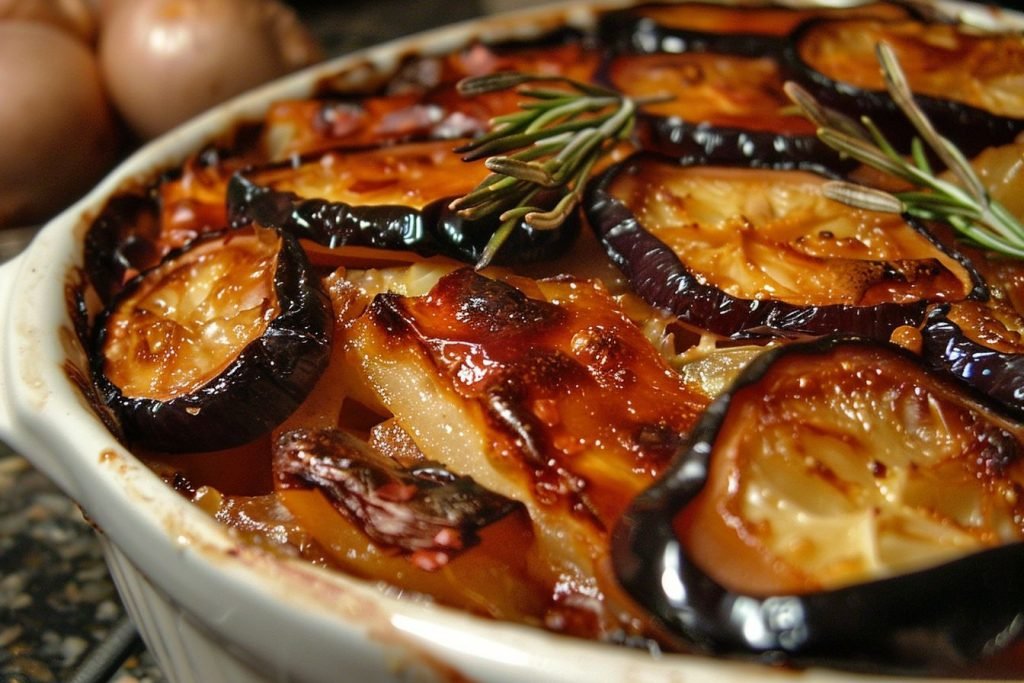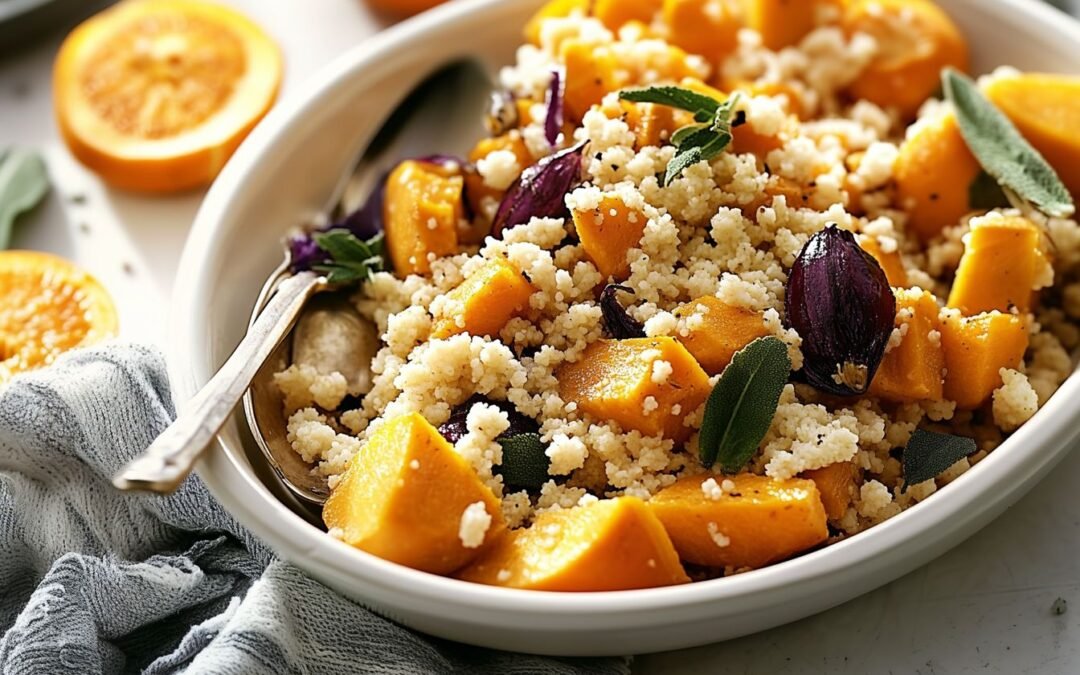Freekeh with yogurt combines nutritious ingredients for a delicious and satisfying meal. This dish offers a perfect blend of freekeh, creamy Greek yogurt, and the refreshing taste of fresh herbs. With ingredients like freekeh, pistachios, vegetable broth, raisins, mint, parsley, and garlic, this recipe provides a unique twist on traditional grain salads.
What Is Freekeh?
Freekeh is a grain made from green durum wheat that has been harvested while still young and tender. I find its nutty flavor and chewy texture quite appealing.
The process of creating freekeh involves roasting the young wheat, which gives it a unique taste and enhances its nutritional profile.
I often use freekeh as a versatile ingredient in salads, soups, or as a side dish. It’s also an excellent substitute for rice or quinoa.
Many value freekeh for its health benefits and sustainability. It’s a great option for those who want to incorporate more whole grains into their diet.

Ingredients:
For the Salad:
- 1 cup of freekeh
- 2 ½ cups of vegetable broth
- ¼ cup of shelled, chopped pistachios
- ¼ cup of raisins
- 2 tablespoons of chopped mint
- 2 tablespoons of chopped parsley
- ¼ teaspoon of ground black pepper
For the Dressing:
- ½ cup of plain Greek yogurt
- 3 cloves of minced garlic
- 1 teaspoon of lemon juice
- ¼ teaspoon of salt
How to make freekeh with yogurt?
- To prepare the freekeh, combine freekeh and broth in a saucepan (medium size). Bring to a boil, then reduce heat and simmer gently, covered, for ten minutes. Cover and let rest for five minutes to allow excess moisture to evaporate. Fluff the freekeh with a fork.
- While the freekeh cooks, whisk together all dressing ingredients in a small bowl until smooth.
- Combine the cooked freekeh with your desired salad components in a serving bowl. Drizzle with the prepared yogurt dressing and toss gently to coat. Serve immediately, or chill for later enjoyment. This versatile dish can be served warm, at room temperature, or chilled.
Nutritional Information
| Nutrient | Amount |
|---|---|
| Calories | 229 kcal |
| Protein | 13 g |
| Carbohydrates | 39 g |
| Cholesterol | 3 mg |
| Dietary Fiber | 4.9 g |
| Fat | 4.3 g |
| Sugar | 10.5 g |
| Sodium | 632 mg |
| Potassium | 252 mg |
| Iron | 2 mg |
| Calcium | 59 mg |
Serving and Presentation
Plating Techniques
Start with a shallow bowl or a plate with a slight rim for a simple yet elegant presentation. I like to create a bed of freekeh, ensuring the texture is visible. Next, I make a well in the center to spoon in the yogurt. This adds depth and highlights the creamy texture against the grain.
I often include a drizzle of olive oil or melted ghee over the yogurt for added flavor. A sprinkle of salt and fresh herbs accentuates the colors. Using contrasting colors, like the rich green of parsley against the pale yogurt, creates an inviting look that encourages diners to dig in.
Garnishing Ideas
To elevate the dish, I enjoy adding various garnishes. Fresh herbs, such as mint or cilantro, offer a refreshing pop. I finely chop them and scatter them generously over the yogurt.
Nuts like toasted almonds or pine nuts provide a satisfying crunch. I lightly toast them in a pan before adding to the dish.
For a touch of sweetness, consider pomegranate seeds. Their vibrant color and juicy texture complement the freekeh.
Incorporating spices, such as smoked paprika or za’atar, can add visual interest and flavor depth. Each element contributes to a well-rounded presentation that excites the palate.
Common Mistakes to Avoid
- Not rinsing freekeh: I always rinse freekeh before cooking. This removes any dust or debris, ensuring a cleaner dish.
- Overcooking freekeh: Freekeh cooks quickly. I keep an eye on it and avoid cooking it longer than necessary. A few minutes can make a big difference in texture.
- Using too much yogurt: Finding the right yogurt-to-freekeh ratio is essential. Too much yogurt can overwhelm the dish. I usually start with a couple of tablespoons and adjust to taste.
- Choosing the wrong yogurt: The type of yogurt matters. I prefer thick, creamy varieties like Greek yogurt. They complement freekeh’s texture the best.
- Neglecting to season: Always season both the freekeh and yogurt mixture. I add a pinch of salt, pepper, and herbs for flavor. It elevates the dish significantly.
- Forgetting about add-ins: Incorporating veggies, nuts, or fruits can enhance my dish. I love adding roasted vegetables for extra texture and flavor.
Conclusion
Incorporating freekeh with yogurt into my meals offers a nutritious and tasty option. The combination brings together freekeh’s nutty flavor and yogurt’s creaminess, creating a delightful experience.
I love experimenting with various herbs and spices to enhance the flavors. Ingredients like mint or garlic can add a fresh touch that complements the dish well.
Freekeh with yogurt can serve as a main dish or a side, making it versatile. Whether preparing a meal for myself or entertaining guests, it’s a satisfying choice that appeals to many tastes.
Overall, it’s a simple, yet delicious way to enjoy wholesome food, and I appreciate how easy it is to prepare.
Remember this: For a hearty meal, you can have this salad along with Egyptian moussaka.
Get that recipe now (by clicking the image below):





